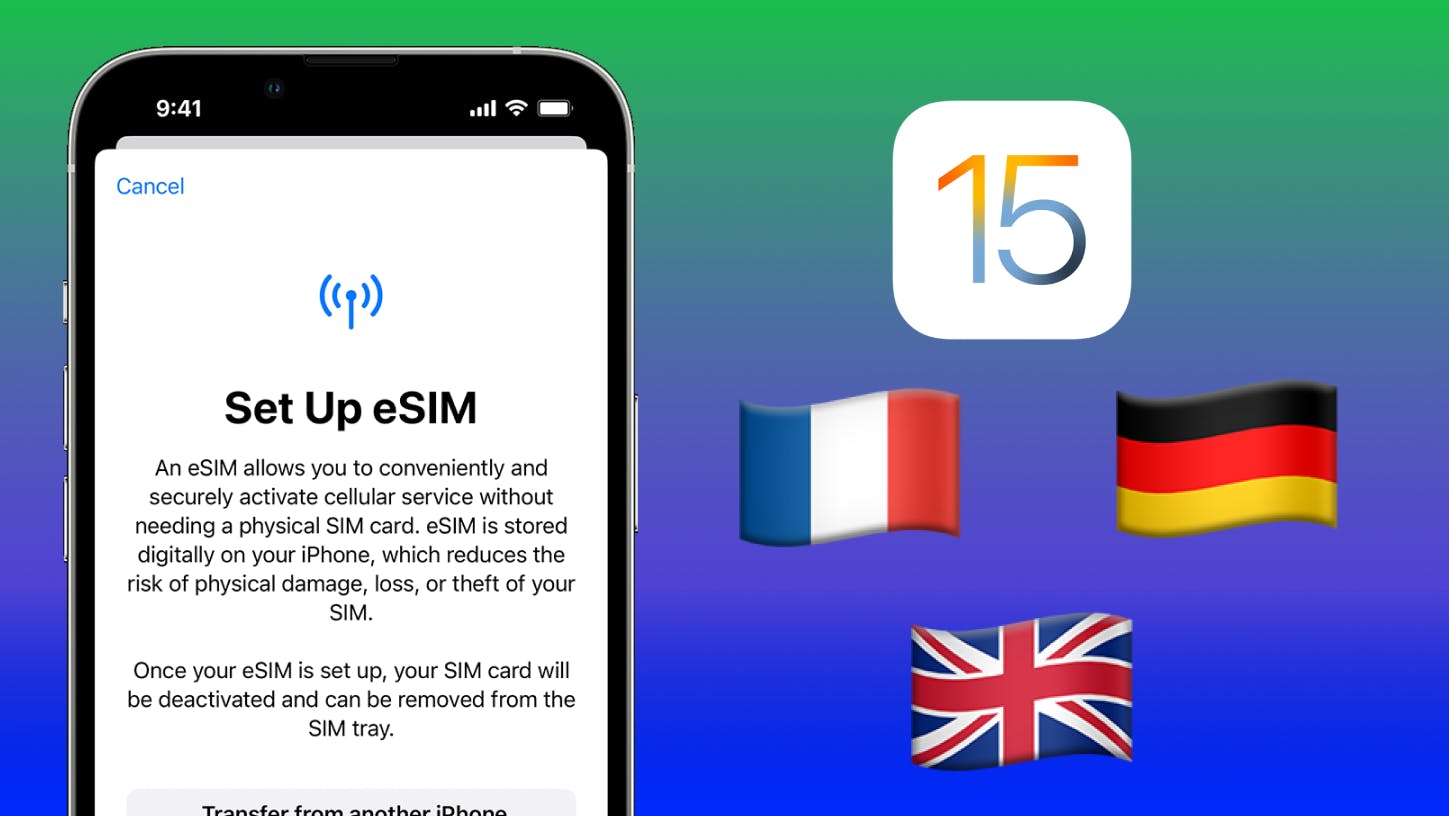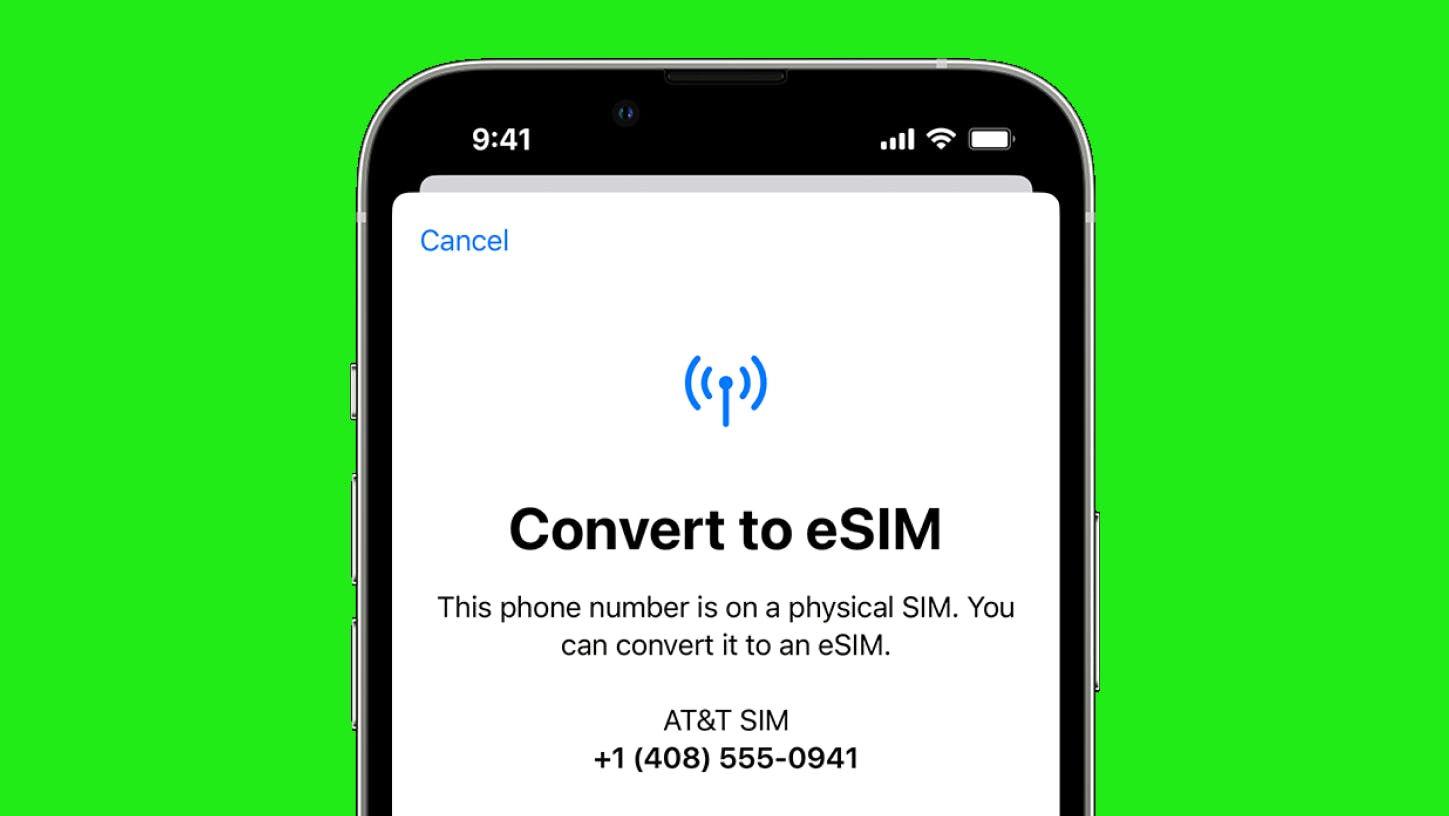
The buzz Around the iPhone 15 and eSIM
Every year, the iPhone's launch is a significant event in the tech calendar. As the iPhone 15's anticipated launch date nears, the rumor mill is abuzz.
One of the most intriguing speculations is the potential shift to an eSIM-only model for the iPhone 15.
Some whispers suggest that Apple might completely abandon the physical SIM tray, opting for an eSIM-only configuration globally. Others hint that this transition might be limited to specific countries, notably the UK, Europe, and France (source: inferse.com).
The iPhone 14 marked a pivotal shift in Apple's approach to SIM technology. In the U.S., the iPhone 14 was the first model to exclusively offer eSIM, eliminating traditional physical SIM cards. This move, while groundbreaking, required a significant effort from service providers to adapt to this new standard.
According to a WIRED review, the eSIM technology isn't new---it's been available since the iPhone XS.
However, with the iPhone 14, Apple took a bold step by completely removing the physical SIM card slot for iPhones sold in the U.S. This decision was a significant departure from previous models, where users had the option of either using a physical SIM or an eSIM. For the rest of the world, including the UK, the option to use a physical SIM remained available.
The eSIM offers a more streamlined experience for iPhone users, provided their network provider supports it. Setting up an eSIM is relatively straightforward on iOS, but the complete removal of the physical SIM tray in the U.S. models meant that users whose providers didn't support eSIM were left with fewer options. This change, while innovative, posed challenges for both consumers and service providers.
For consumers, especially those who frequently travel or rely on multiple SIM cards, the absence of a physical SIM tray could be limiting.
One reviewer mentioned, "The eSIM is easy for iPhone users to set up if their network provider supports it. Mine doesn't, so I was glad to have the old physical tray."
This sentiment was echoed by another WIRED reviews editor, Julian Chokkattu, who stated, "I had no trouble transferring my number from an iPhone 13 Pro to a few different iPhone 14 models. It was merely a matter of pressing a few buttons."
However, for those whose providers were not on board with eSIM technology, the transition was not as smooth (and actually did not happen at all).

the eSIM conversion feature on iOS
The decision to go eSIM-only in the U.S. was a testament to Apple's confidence in the technology and its belief in a more digital, streamlined future for mobile connectivity.
But it also highlighted the need for service providers to be agile and adaptive, ensuring they remain compatible with the ever-evolving tech landscape. Which is not always the case.
The transition to eSIM technology indeed presents numerous challenges for service providers.
To say the least, these challenges include obtaining GSMA certification, regulation with app marketplaces, and integrating a customer-focused digital network.
The GSMA Certification can be long and complex.
Any operator that wishes to enable eSIM capability needs to, as per the Global System for Mobile Communications (GSMA), acquire a network element called Subscriber System (SM-DP+) to manage and activate eSIM profiles. Furthermore, this network element requires certification from the GSMA as per the SGP.24 Compliance Process to ensure it aligns with GSMA security requirements.
The certification process can be long and complex, often lasting up to a year. This has resulted in a limited list of certified Subscriber Management providers globally. Some of these are Telco Service provider giants that aren't keen on sharing their capabilities, while others are vendors in the Internet of Things (IoT) segment with little interest in adopting solutions for the consumer segment. This disparity creates a gap between supply and demand, making it challenging for smaller mobile operators to enable eSIM capability (source : mobiliseglobal.com)
eSIM provisioning via app is regulated.
According to mobiliseglobal's article, The GSMA wants to ensure that eSIM provisioning via mobile applications can only be offered by apps released by the service provider themselves. To achieve this, the GSMA collaborated with app marketplaces like Google Play and the App Store. They have regulated the process for app developers to provision the eSIM via a mobile app. This process is complicated and offers little support or guidance to developers, making it a hurdle for many service providers.
Complicated Digital-Network Integration.
For mobile service providers to capitalize on eSIM capability and offer a seamless digital user experience, they need a digitally focused Business Support System (BSS).
This system should provide real-time provisioning, eSIM management, payment processing, and service activation. While service providers process thousands of concurrent data and voice sessions every second, their systems were not designed to manage service provisioning in real-time. Adapting to this new demand often requires a costly digital transformation, which can be prohibitive for many small and medium-sized enterprise (SME) service providers already grappling with shrinking margins and increasing competition.
The choice for MNOs is clear: "Support eSIM and survive or do nothing and perish."
Service providers don't really have a choice
Despite those complexities, it's obvious telecom providers need to get onboard. In a statement from NERDBOT, it's evident that mobile network operators (MNOs) must now seek the services of an eSIM provider, particularly an eSIM device and subscription management and remote provisioning provider.
What is likely to happen with the iPhone 15 and eSIM
eSIM only iPhone 15 in France, the UK, and maybe other EU countries
Given the challenges associated with eSIM adoption, it's probable that the iPhone 15 will be eSIM-only in the U.S. and in certain European countries, such as France and the UK.
According to a TechRadar article, there are consistent leaks suggesting that Apple's next generation of iPhones might be leaning towards eSIM technology. Another article from MSN also hints at Apple preparing to move to eSIM in countries outside the U.S. for the iPhone 15.
It's probably too soon for an eSIM only iPhone 15 globally
However, considering the effort required to adapt to eSIM, it's unlikely that all global providers will be ready for a complete transition to eSIM. The complexities of obtaining GSMA certification, the intricate process with app marketplaces, and the need for a digitally focused Business Support System (BSS) make the transition challenging for many service providers.
Given these challenges, esims.io's team pronostic is that only with the iPhone 16 or even the iPhone 17 will the physical SIM card completely disappear.
Yet, as Digital Trends suggests, while there's a lot of speculation, nothing is final until Apple confirms it during an official announcement. The mobile industry is in a state of flux, and the trajectory of eSIM adoption will be a testament to the agility and adaptability of service providers worldwide.
![AT&T Prepaid eSIM plans for Travelers: What to Know Before You Purchase [2024]](http://esims-blog.imgix.net/0cjae5gr4pon/1Ve5XBnTKJtyIS7fPmvEhK/ff54ea086e0ea9748282ce5ddca187bd/AT_T_eSIM_HOW_TO_GET_ONE.png?w=500)



